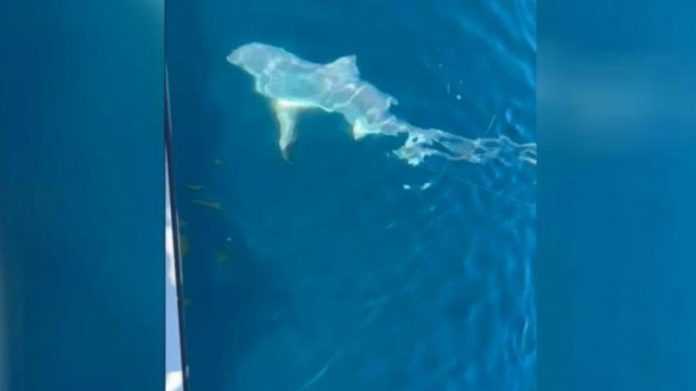by EH
In a surprising turn of events, thresher sharks have once again been sighted in the waters off Muggia, rekindling a sense of intrigue and concern among marine biologists and local fishermen alike. The rare appearance of this species, which was once a fleeting visitor to these northern latitudes, now seems to be part of a broader and more permanent shift in the region’s marine ecosystem.
Sandro Bianco, a seasoned fisherman from Pozzuolo del Friuli, captured these remarkable images while casting his line near the Paloma buoy earlier this month. Bianco’s video offera a glimpse into a changing sea, one that reflects broader environmental transformations in the Adriatic.
“Seeing so many thresher sharks at this time of year is a positive sign,” says Saul Ciriaco, a scientist with the Miramare Marine Protected Area’s management and monitoring service. “The Upper Adriatic is known to be a breeding ground for these sharks. It’s possible that a reduction in fishing activities or more selective fishing practices is making their reproduction more efficient. As a result, we’re simply seeing more of them.”
Yet, while the increase in shark sightings might be seen as a hopeful indication of ecological resilience, it is also a testament to the rapidly warming waters of the Upper Adriatic, a trend that is reshaping the region’s marine life in unprecedented ways.
“The Adriatic is becoming a warmer sea, not just in the summer but in the winter as well,” Ciriaco explains. “This rise in average temperatures allows species that once only sporadically visited our waters to survive the winter months and reproduce during the summer. In particular, the summer warmth enables them to proliferate excessively, leading to competition with local species for food.”
The impact of this warming is already evident. Tropical species, once rare visitors, are now becoming common fixtures in the Adriatic. Among these are the blue crab, bluefish, and dusky spinefoot, all of which have been observed with increasing frequency. Just this past week, a school of eight triggerfish was reported between Muggia and Barcola—another sign that the Gulf of Trieste is becoming a more hospitable environment for species once considered exotic.
These developments underscore a critical shift in the Adriatic’s ecological balance, one that may have profound implications for the future of the region’s marine biodiversity. As the waters warm and new species establish themselves, the once familiar rhythms of life in the Gulf of Trieste are being rewritten in ways that scientists and fishermen are only beginning to understand.





























